Coolie Woman
The Odyssey of Indenture
GAIUTRA BAHADUR
THE UNIVERSITY OF CHICAGO PRESS
Chicago and London
GAIUTRA BAHADUR is a journalist and book critic whose work has appeared in the New York Times Book Review, the Washington Post, Ms., and the Nation, among other publications.
The University of Chicago Press, Chicago 60637
Published by arrangement with C. Hurst & Co. (Publishers) London
2014 by Gaiutra Bahadur
All rights reserved. Published 2014.
Printed in the United States of America
23 22 21 20 19 18 17 16 15 14 1 2 3 4 5
ISBN-13: 978-0-226-03442-3 (CLOTH)
ISBN-13: 978-0-226-04338-8 (E-BOOK)
DOI: 10.7208/chicago/9780226043388.001.0001
LIBRARY OF CONGRESS CATALOGING-IN-PUBLICATION DATA
Bahadur, Gaiutra, 1975author.
Coolie woman : the odyssey of indenture / Gaiutra Bahadur.
pages cm
Published by arrangement with C. Hurst & Co. (Publishers) LondonTitle page verso.
Includes bibliographical references.
ISBN 978-0-226-03442-3 (cloth : alkaline paper)ISBN 978-0-226-04338-8 (e-book)
1. Indentured servantsGuyanaHistory20th century. 2. Women slavesGuyanaHistory20th century. 3. Women, East IndianGuyanaSocial conditions20th century. I. Title.
HD4875.G95B34 2014
331.4117dc23
2013008860
 This paper meets the requirements of ANSI/NISO Z39.48-1992 (Permanence of Paper).
This paper meets the requirements of ANSI/NISO Z39.48-1992 (Permanence of Paper).
To my parents Kamla and Mahen
For their sacrifices and their support
To my sisters Kash and Reena
For indulging and understanding
And in memory of my grandfather
Harry Persaud Ramcharan (19332009)
CONTENTS
EPIGRAPH
Silence can be a plan
rigorously executed
the blueprint of a life
It is a presence
it has a history a form
Do not confuse it
with any kind of absence
Cartographies of Silence, Adrienne Rich
ACKNOWLEDGEMENTS
I am grateful to my parents and my sisters first; without them, I could never have written this book. There arent acknowledgements enough for all the supporting, listening, reading, remembering, feeding, housing and indulging that they did. I thank them for allowing me to abdicate responsibility for almost everything but this book, during four years that saw a death, a birth and the accelerated ageing of us all. I thank them for understanding when I couldnt be there.
My gratitude also to my extended family, who shared memories of Sujaria and of growing up in Cumberland Village in the decades after indenturemy grandmother Maturani Persaud in New Jersey, my great-aunt Maharanee Persaud in Toronto, my great-uncle Bishnodat Persaud in London and Sujarias granddaughters: my aunt Somewati Persaud in New Jersey and my fathers cousins Edna and Sarojini Baisakhu and Bhagmanti Baby Ramanan in Florida. What they remembered helped me reconstruct a life and conjure a place.
For knowing from the start the value of this project, and reminding me when needed, I am indebted to my dear friend Sujani Reddy. For their encouragement and company while I pursued a project that was lonely and difficult on many fronts, I thank old friends and many new ones made along the way: my brother-in-law Matthew Lang, Dahlia Lahmy, Guy Shoham, Allan MacWilliam, James Long, Salil Tripathi, Omar McDoom, Rachel Gisselquist, Esther Sabetpour, Ben Markovits, Natasha Warikoo, Ramesh Kumar, Niraj Warikoo, Annetta Seecharan, Rex Jackson, Vidyaratha Kissoon, Juan Carlos Rodriguez, Katherine Tai, Madhu Bora, Saurav Pathak, Jas Knight, Rachel Natelson, Adam Shatz, Manan Ahmed, Elisa Ung, Vicash Dindwall, Mukul and Seema Sukhwal and Indraneel Sur.
For giving me the confidence and funds to begin, I thank the Nieman Foundation for Journalism at Harvard University, former curator Bob Giles and all my community there, especiallyfor taking an active, sheltering interest in me and this projectMelanie Gosling, Holly Williams, Josh Benton, Carline Watson, Kate Galbraith and Simon and Ulrike Wilson.
Many friends and colleagues provided feedback that improved the manuscript. Especially helpful was Neel Mukherjee, whose appreciative but critical eyes proved invaluable in paring it into a tighter, more elegant book. Many thanks also to Alissa Trotz, Sherlina Nageer, Patricia Mohammed, David Alston, Ashwini Tambe, Vidyaratha Kissoon, Natasha Warikoo, Sujani Reddy, Annetta Seecharan, Ethan MacAdam, Sean Westmoreland, Andrea Pitzer and Dan Vergano for the generous gift of their time and observations. At an all-important embryonic stage, Josh Benton, Sadanand Dhume, Amitava Kumar, Tess Taylor, Diana Finch, Adam Hochschild, Marina Budhos, Kevin Dale, Leela Jacinto and Naresh Fernandes all read the proposal and provided advice or moral support.
For vouching for my work, I am grateful to Naresh Fernandes, Amitava Kumar, Bruce Shapiro, Samuel G. Freedman, Carl Bromley, Adam Hochschild, David Dabydeen and Melissa Ludtke. For their insights and collaborative spirit, I thank Alissa Trotz and Nalini Mohabir, scholars in the best, most altruistic sense.
For their great hospitality, in providing places to stay while I researched and reported, I thank Yesu Persaud and Ayesha and Doodnauth Singh in Georgetown, my great-aunt and great-uncle Daro and Dhan Rhambarose in Cumberland, Patricia Mohammed and Rex Dixon in Trinidad, and Frank and Dolly MacWilliam in Scotland. Thanks to Auntie Babsin, my caretaker in Cumberland, who cooked and washed for me, kept me company, brought me Bottom House gossip truer than the newspapers and kept delighting me with the poetry of everyday speech. Its true what she said: Some people does really tek yuh shadow.
Stabroek News reporter Shabna Ullah and editor Anand Persaud shared sources and knowledge. Kamal Ramkarran opened up to me his law offices rare collection of nineteenth-century British Guiana Law Reports. I owe endless thanks to Rex Jackson and Vidyaratha Kissoon for their remarkable kindness in chasing down stray documents in Guyana and for much else that was beyond the call of duty. Sree Sreenivasan made key connections in India. Painter Bernadette Persaud, linguist John Rickford and artists Pritha and Karna Singh, cultural custodians all, shared their families stories. William Dalrymple and Kathy Fraser helped me navigate archives in Scotland. Brinsley Samaroo took me to tea and guided me to monographs in Trinidad. Manu Vimalasserys footnotes gave me a compass. Moses Seenarine led me to the unpublished autobiography of Alice Bhagwandai Singh.
For guiding me in my travels, I thank Highlands historian David Alston in Scotland; Merle Persaud, the managers of the Rose Hall and Enmore Sugar Estates and the Guyana Agricultural Workers Union in Guyana; and Ishwar Chandra Kumar, Lakshmi Nidhi Singh and Pranav Chaudhury in Bihar.
Visual artist Sarah Cawkwell and her husband, the writer and anti-apartheid activist Sylvester Stein, remembered what it was like to be penniless in a creative cause and cut me major breaks on rent in their London garret as a result.
For helping me to translate Damra Phag Bahar, the only known literary text by an indentured laborer in the Anglophone Caribbean, I am grateful to Shashwata Sinha in the US, Ashutosh Kranti in India and Visham Bhimull and Rohit Dass in Trinidad.
I would like to thank the resourceful staff of the Asian and African Studies Reading Room at the British Library, the Public Record Office at the UK National Archives, The National Archives of Scotland, the Alma Jordan Library at the University of the West Indies and the Walter Rodney Archives in Georgetown, Guyana.
I owe intellectual debts to Verene Shepherd, Patricia Mohammed, Peggy Mohan, Ramabai Espinet, Prabhu Mohapatra, Clem Seecharan and Tejaswini Niranjana, who have all excavated the story of Indian women in indenture and told it with sensitivity and intelligence, in various genres.
Next page



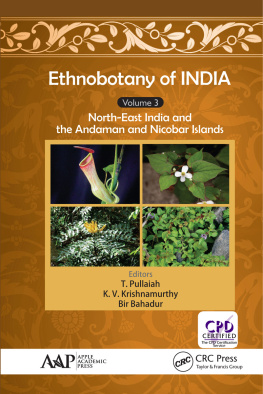
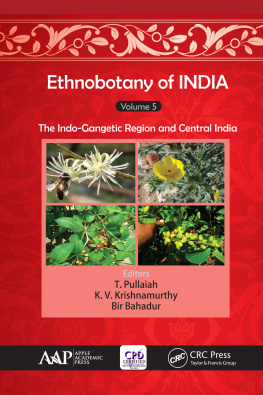
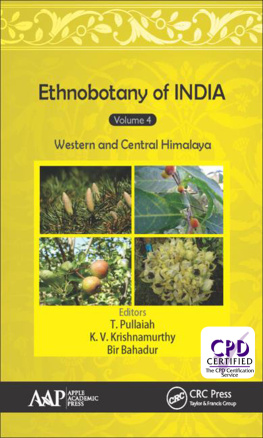
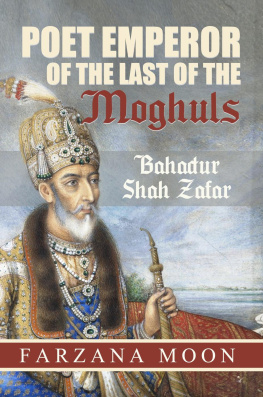
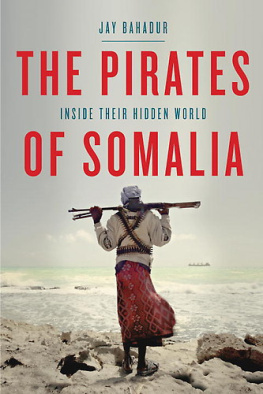
 This paper meets the requirements of ANSI/NISO Z39.48-1992 (Permanence of Paper).
This paper meets the requirements of ANSI/NISO Z39.48-1992 (Permanence of Paper).